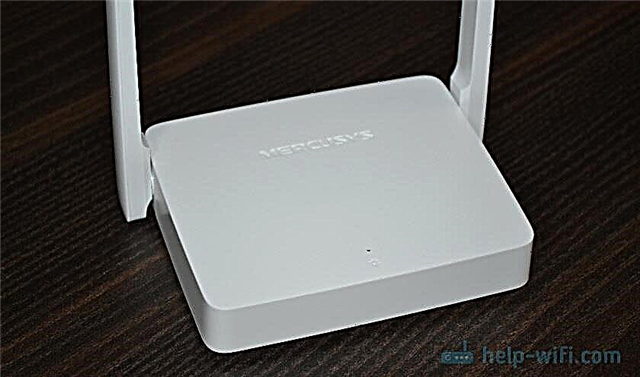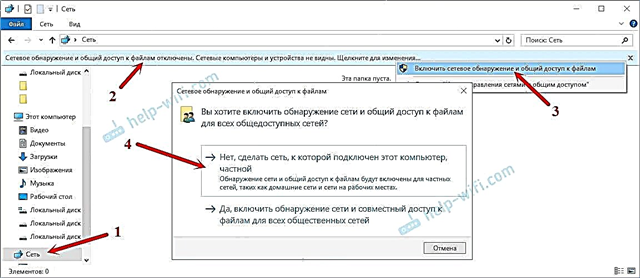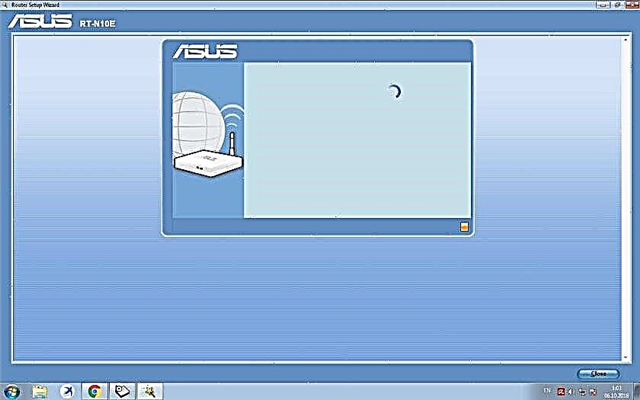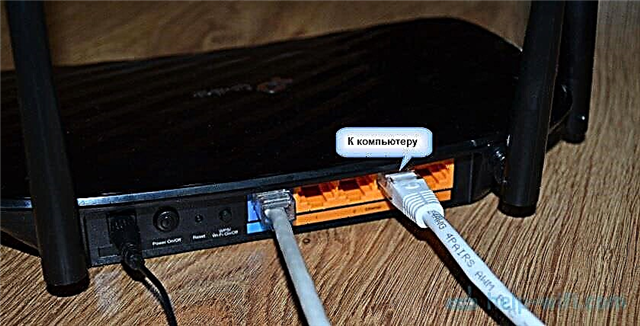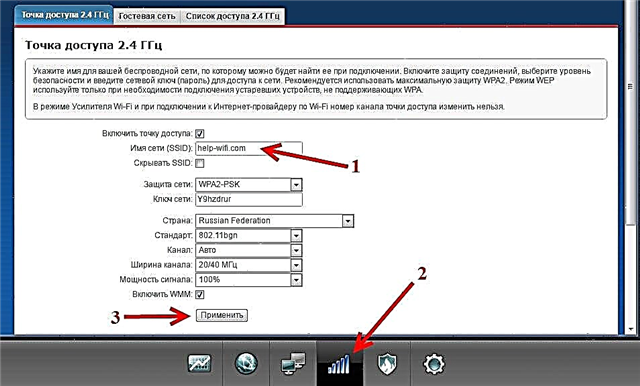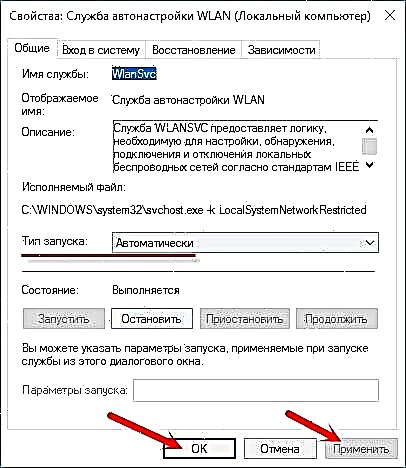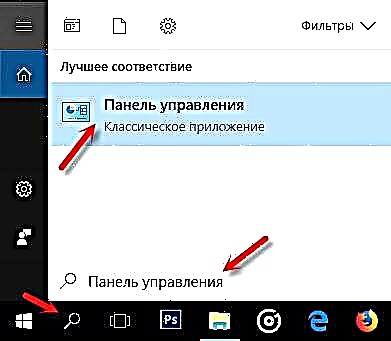Hello! For those who are not in the subject, I'll start from afar. On computers and laptops with Windows installed, Explorer has a separate "Network" tab. This tab displays devices from Network Neighborhood. That is, by opening the "Network" tab, we can observe there computers, network attached storages (NAS), multimedia devices (DLNA), flash drives and external drives that are connected to the router and to which the general access is configured. Simply put, those devices that are connected through the same router (located on the same network) and on which the network discovery function is enabled (devices that can be discovered on the local network). Our router (section "Network infrastructure") and other devices can also be displayed there.
Now I will explain what and how, and why I decided to write this article at all. I have an ASUS router, to which I connected a USB flash drive, and set up a shared access to this flash drive for all devices on the network. And what do you think, in the "Network" section on all computers this network drive appeared (it appears there as "Computer"), but it was not displayed on my computer. That is, my computer did not see a USB flash drive connected to the router, or other computers on this network. But the DLNA server was displayed running on the same router. But that doesn't change anything, since I need regular network access to the drive.

Also, I could not access the flash drive when I typed its address //192.168.1.1 in explorer. This address was immediately opened through the browser. And I was unable to connect this drive as a network drive. It simply wasn't on the list of available devices in the network environment.
Such a problem, when Windows 7, Windows 8, or Windows 10 does not see network devices, is not uncommon. It doesn't have to be a flash drive, or an external HDD that you connected to your router, as in my case. Most often, they configure shared access between computers on a local network. And in the same way, they face a problem when computers are connected to the same network (to one router), the sharing settings are set correctly, and the "Network" tab is empty. Or, only the router and your computer are displayed.
Since there can be many reasons and, accordingly, solutions, I will probably start with the simplest ones (which did not help me) and at the end of this article I will share the solution that helped in my case. As a result, my laptop still saw all the devices on the network. Including a network drive and another computer that is also connected to this network.

But this does not mean that you have the same case. Therefore, I advise you to check all the settings in order.
Checking the sharing settings
We will consider two cases:
- When computers cannot see each other on the local network.
- Sharing a NAS. We can have a flash drive, or a hard drive that is connected to a router, or a separate drive (aka NAS).
First case
For computers to be able to see each other and appear in the explorer in the "Network" section, they must be connected through the same router. Or connected directly (by cable, or via Wi-Fi). Simply put, they must be on the same local network.
Further, on all computers (I do not know how many of them you have there), it is advisable to assign the network status "Home" (private). How to do this in Windows 10, I wrote in the article home (private) and public (public) network Windows 10. In Windows 7, just go to the "Network and Sharing Center" and change the status of the current connection there.

If after that the computer still does not detect other computers (or vice versa), then let's check the sharing settings.
To do this, in the "Network and Sharing Center" window (if you do not know how to open it in Windows 10, then see this article) click on the "Change advanced sharing settings" item.

And for the current profile (usually "Private") set the parameters as in the screenshot below.

Do it on all computers on the local network.
Articles on this topic:
- Setting up a local network in Windows 10. Home network via a Wi-Fi router between Windows 10 and Windows 7
- Setting up a local network via a Wi-Fi router between computers on Windows 7. Opening shared access to files and folders
As a rule, these tips solve all problems with detecting computers on the local network.
Second case
When you have problems accessing your NAS. As in my case. Windows 10 did not see the USB drive that was connected to the ASUS router. Nowadays, many routers have a USB port for connecting drives and other devices, so the topic is relevant.
You need to make sure that this drive is defined in the settings of the router, and public access to it is enabled. It is clear that on different routers, this is done in different ways. On ASUS routers, for example, it looks like this:

Related articles:
- Access to a USB disk (flash drive) through a TP-Link router over the network
- Connecting a USB flash drive or external HDD to an Asus router. Sharing files on a router
Don't confuse sharing settings with FTP settings. In this case, the FTP server settings on the router have nothing to do with it.
Well, if other devices see the network drive and have access to it, but on a particular computer there is no access to it, then the problem is not on the side of the router. Go through the settings of the "problem" PC in this article.
Antivirus or firewall might block network devices
If your antivirus or firewall (firewall) installed on your computer does not like something, then it can easily make it so that neither you can see other devices in the network environment, nor can anyone detect you.
True, after disabling the built-in firewall in the antivirus, the problem was not solved (which means that the problem is most likely not in it), but everything seems to me exactly that in my case it was not without the participation of the antivirus.
Therefore, try to temporarily stop the antivirus completely, or at least disable the built-in firewall (firewall). NOD 32 does it like this:

To check this you need to do on all computersthat will participate in the local network.
It is possible that you have installed some other programs that can monitor the network and manage network connections.
If it turns out that the problem is in the antivirus, then you need to add your network to the exceptions. Forbid the firewall to block the network itself, or network devices.
If you do not have an antivirus, then you can experiment with disabling / enabling the Windows built-in firewall.
Working group
The workgroup should be the same on all devices. As a rule, it is. But it is advisable to check. To do this, open the computer properties "System" and go to "Advanced system settings".
The "Working Group" will be listed there. To change it, you need to click on the "Change" button.

Once again, the workgroup name must be the same on all computers.
If you have a problem with access to a network storage (to a USB flash drive through a router), then the working group is also indicated in the sharing settings on the same ASUS router. You can see the screenshot above in the article. It should be the same as on the computer.
Problem with accessing network share via SMB1 on Windows 10 (my solution)
Let's go back specifically to my problem. Everything that I described above has been checked and rechecked 10 times already. I reset the network settings a couple of times, but Windows 10 never saw other computers on the network and, most importantly, the shared folder in the form of a flash connected to the router did not appear in Explorer. And on other devices on the network, everything was determined without problems. Including my laptop.
I read somewhere that you can try to open the shared folder through the "Run" window. I pressed the key combination Win + R, entered the address of the network folder //192.168.1.1 (aka the address of the router).
I didn't get access to the drive, but an interesting error appeared:
You cannot connect to the shared folder because it is insecure. This shared folder uses the legacy SMB1 protocol, which is insecure and could put your system at risk of attack.
Your system must be using SMB2 or later.
And a link that you need to manually type 🙂
There she is:

This is already interesting. At least something.
SMB (Server Message Block) is a network protocol that is responsible for sharing files, printers and other network devices.
I started looking. And it turns out that Windows 10 has dropped the SMB1 protocol. For security. And the Samba software package installed on my router works over the SMB1 protocol. Therefore, Windows 10 does not see it. But other computers that also work on Windows 10 were also not displayed on the "Network" tab for me.
Since I could not update the protocol to SMB2 in the router settings, I decided that I needed to somehow enable SMB1 support in Windows 10. And as it turned out, this can be done without any problems. As a result, after connecting the "Client SMB 1.0 / CIFS" component, everything worked for me. The system saw shared folders on computers on the network and a network folder configured on the router itself.
How to enable SMB1 in Windows 10?
Search for and open the old "Control Panel".

Switch to "Small Icons" and open "Programs and Features".

Open "Turn Windows features on or off". We find the item "Support for sharing files SMB 1.0 / CIFS". Open it and put a checkmark next to "SMB 1.0 / CIFS Client". Click Ok.

If the computer asks to restart, then restart it. If there is no window with a proposal, then restart it manually.
After rebooting, on the "Network" - "Computer" tab, all available devices on your network should appear.
I would be glad if this article is useful to someone and helps to solve the problem. Do not forget to write in the comments about the results. Or ask a question, where can we go without them 🙂


